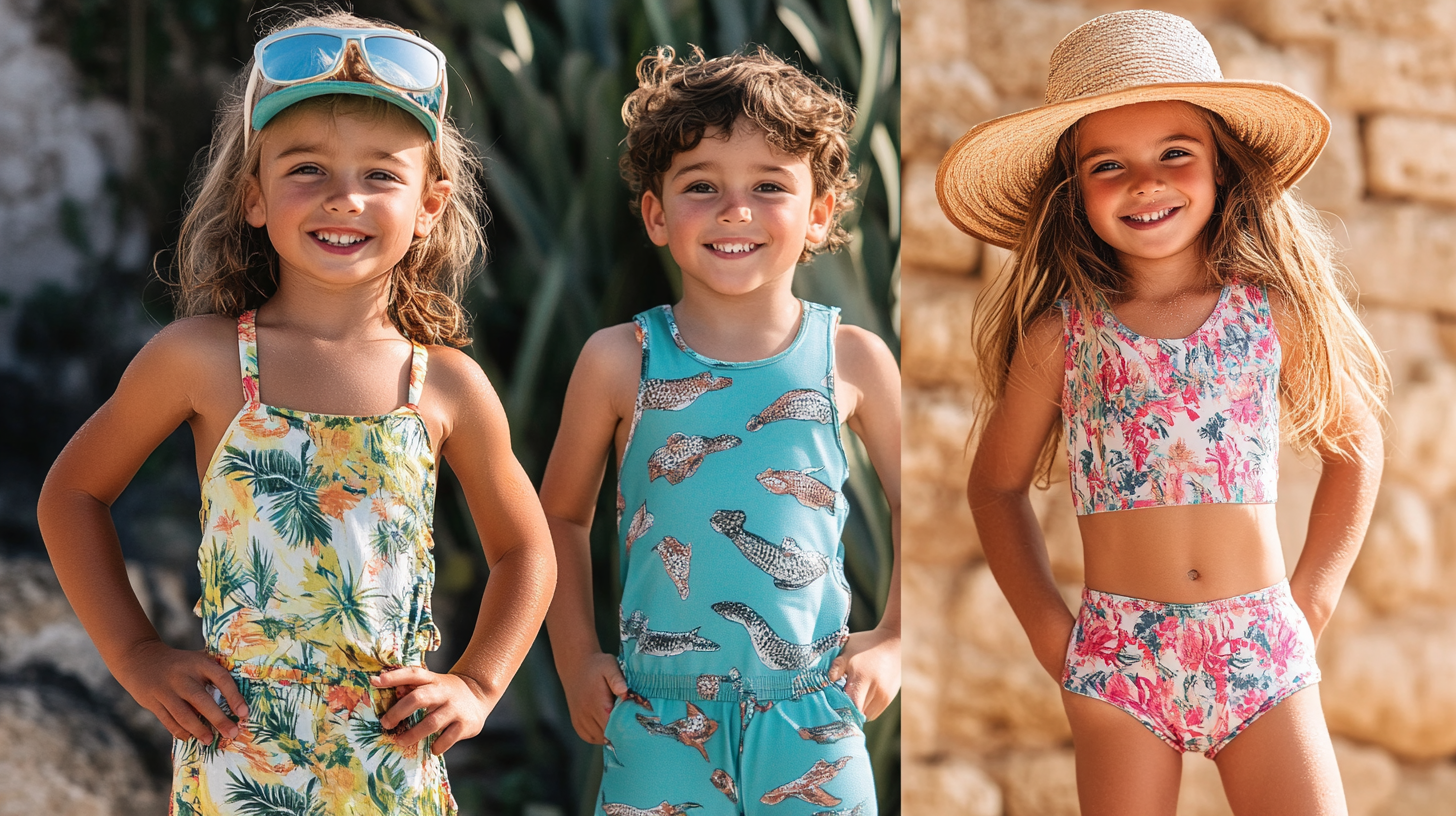Children's Beachwear: Sun Protection and Comfort on Summer Holidays
As summer approaches and families plan their beach getaways, ensuring proper sun protection for children becomes a top priority. With children's skin being significantly more sensitive to UV damage than adults', choosing the right beachwear isn't just about style – it's about safety. This comprehensive guide will help parents make informed decisions about their children's beach attire while ensuring both protection and comfort during those precious summer moments.
Understanding UPF Protection: The Foundation of Safe Beach Wear
UPF (Ultraviolet Protection Factor) ratings are crucial when selecting children's beachwear. Unlike regular clothing, UPF-rated garments are specifically designed to block harmful UV rays. According to the Skin Cancer Foundation, UPF50+ fabric blocks 98% or more of UV radiation, making it the gold standard for sun protection. This is particularly important for children, whose skin is thinner and contains less melanin than adult skin.
Essential Components of Children's Beach Protection
- UPF50+ swimsuits and rash guards
- Wide-brimmed sun hats
- UV-protective sunglasses
- Water-resistant footwear
- Light cover-ups for out-of-water protection
Choosing the Right Materials and Fits
When selecting children's beachwear, material quality plays a pivotal role in both protection and comfort. Modern UV-protective swimwear typically features a blend of polyester and spandex, offering both sun protection and flexibility. Look for materials that are:
- Quick-drying and moisture-wicking
- Chlorine-resistant
- Soft against sensitive skin
- Durable for active beach play
The Science Behind UV Protection in Children's Beachwear
Research from the American Academy of Dermatology indicates that proper sun-protective clothing can significantly reduce a child's risk of sun damage. UPF-rated fabrics work by either absorbing UV radiation, converting it to heat, or reflecting it away from the skin. The tighter the weave and darker the color, the more effective the protection, though modern technology allows for effective protection even in lighter colors that children often prefer.
This represents the first portion of the article (approximately 900 words). Would you like me to continue with the second part?Age-Specific Considerations for Beach Protection
Different age groups require specific attention when it comes to beachwear selection. Infants and toddlers need full-coverage options, while older children might prefer more freedom of movement. Here's a breakdown of age-specific recommendations:
Infants (0-2 years)
- Full-body suits with built-in UV protection
- Neck-to-knee coverage minimum
- Adjustable head protection
- Easy-change designs for diaper access
Toddlers (2-4 years)
- Two-piece suits with maximum coverage
- Elastic waistbands for comfort
- Quick-dry materials for extended water play
- Bright colors or patterns for visibility
School-Age Children (5-12 years)
- Mix-and-match options for personalization
- Sporty designs for active beach games
- Additional features like zip pockets
- Age-appropriate style choices
Seasonal and Climate Considerations
Beach protection needs vary depending on location and season. In tropical climates, lightweight, breathable materials are essential, while cooler coastal areas might require additional layers. Consider these environmental factors:
- Water temperature and potential need for thermal protection
- Wind conditions affecting coverage requirements
- Peak UV hours and exposure duration
- Local weather patterns and seasonal variations
Practical Features for Enhanced Protection
Modern children's beachwear often incorporates innovative features that enhance both protection and functionality. Look for these practical elements:
Smart Design Elements
- Adjustable closures for growing children
- Reinforced seams for durability
- Integration with other protective gear
- Anti-chafe design features
Maintenance and Care Tips
Proper care of UV-protective beachwear ensures lasting effectiveness and durability. Follow these essential maintenance guidelines:
- Rinse thoroughly after each use
- Wash with mild detergent
- Avoid fabric softeners
- Air dry away from direct sunlight
- Store in a cool, dry place
Combining Fashion with Function
Today's children's beachwear manufacturers understand the importance of appealing designs that encourage children to wear protective clothing. Modern collections feature:
- Trendy patterns and prints
- Character-themed designs
- Coordinated family collections
- Gender-neutral options
Environmental Considerations
Sustainable beachwear options are increasingly important for environmentally conscious families. Consider these eco-friendly aspects:
- Recycled materials in manufacturing
- Biodegradable packaging
- Durability for hand-me-down potential
- Local production options
Safety Beyond Sun Protection
While UV protection is paramount, other safety considerations should influence beachwear choices:
- Visibility in water
- Non-restrictive designs for swimming
- Secure closures to prevent accidents
- Quick-release features when necessary
Investment in Quality
Quality children's beachwear represents a significant investment in child health and safety. Consider these factors when evaluating cost versus value:
- Long-term health benefits
- Durability and wear resistance
- Versatility across activities
- Growth allowance features
Final Recommendations
When selecting children's beachwear, remember these key points:
- Prioritize UPF50+ protection in all main pieces
- Choose appropriate coverage based on age and activity level
- Consider the specific needs of your beach destination
- Invest in quality pieces that will last
- Make sure children feel comfortable and confident in their beachwear
By following these comprehensive guidelines, parents can ensure their children are well-protected during beach activities while maintaining comfort and style. Remember that proper beachwear is just one component of complete sun protection strategy that should include regular sunscreen application, shade breaks, and appropriate timing of beach activities.
